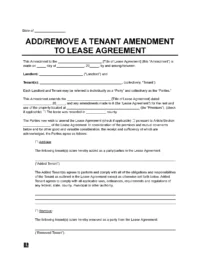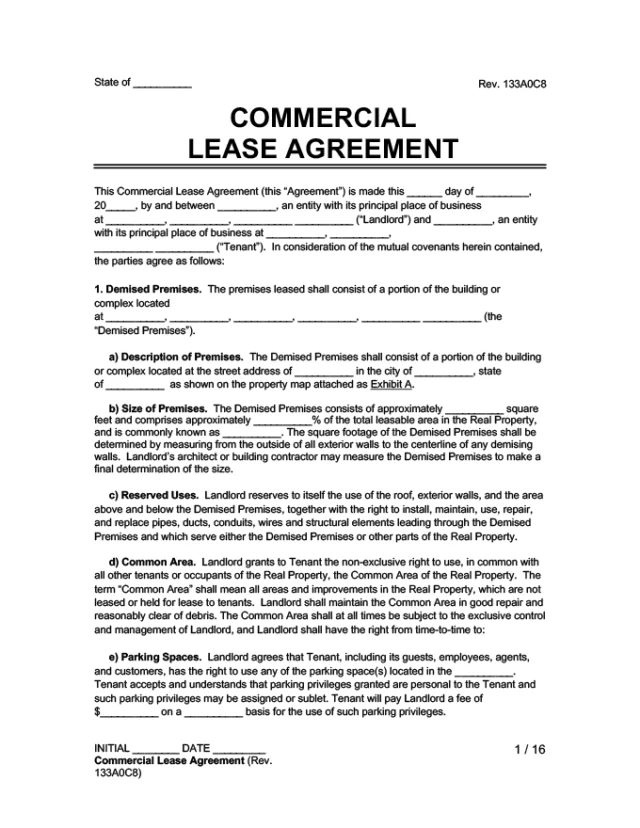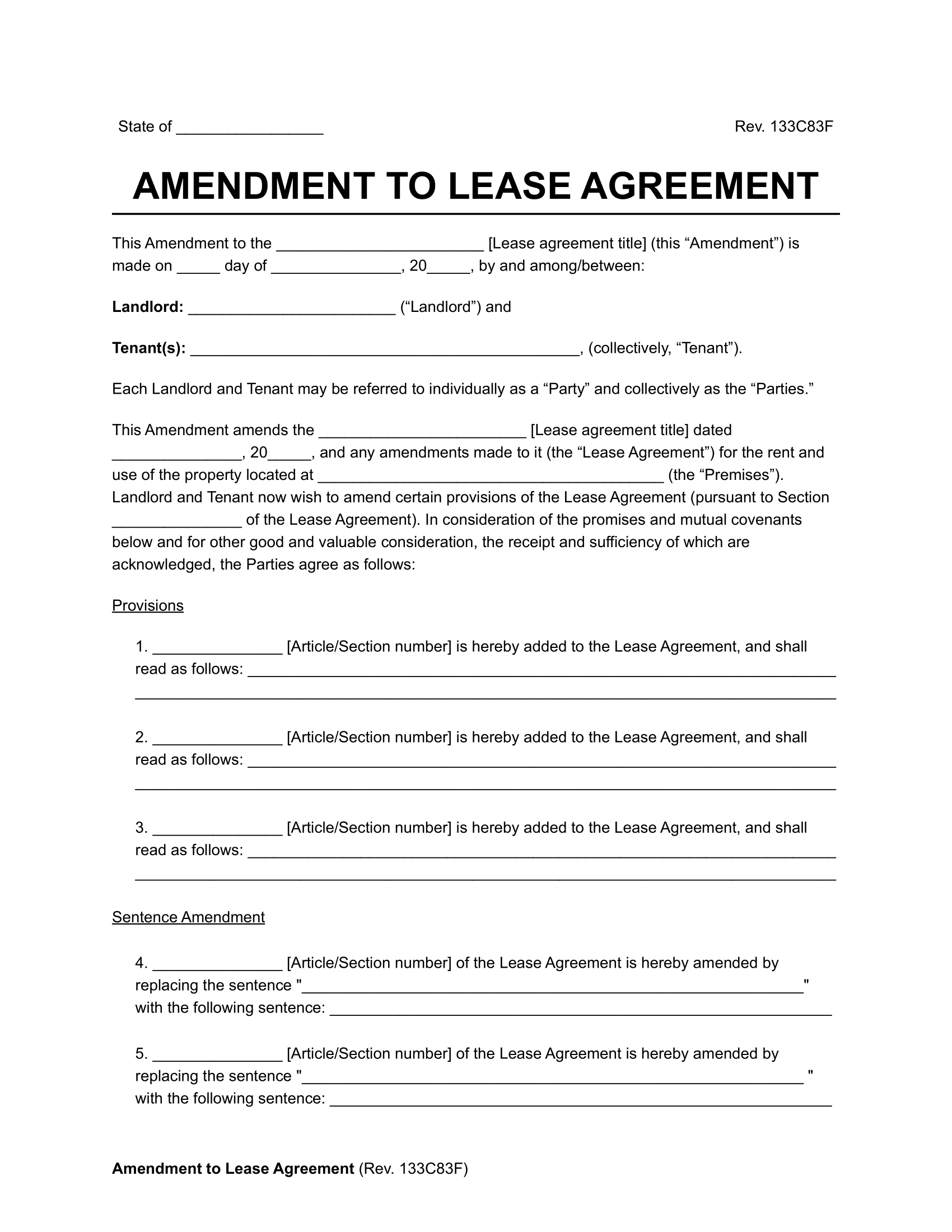What Is a Lease Amendment?
A lease amendment is a legally binding contract defining the new terms of an existing lease. The original lease remains in place, and the amendment adds, removes, or tweaks some existing terms. The landlord and tenant must agree to the amendments and record the changes to put them into effect.
Use Legal Templates’s lease amendment template to ensure your lease reflects your needs. Our forms make changing, removing, or editing your lease terms easy.
Lease Amendment vs. Lease Addendum
A lease amendment adjusts or removes lease terms, while a lease addendum adds extra terms without changing the current agreement.
When to Use an Amendment to a Lease Agreement
Amending your lease agreement helps you update your contract as your needs change. Both landlords and tenants can use a lease amendment in the following situations:
- Terminating early: A landlord may agree to an early termination due to tenant relocation, family emergencies, or special situations. Amend the lease to reflect the early termination date, the updated terms for moving out, and security deposits.
- Extending the lease term: If both parties agree to extend the lease, an amendment can state the new end date and terms. This amendment serves the same purpose as a lease extension.
- Raising the rent: A landlord may increase the rent during the lease period if they follow state rent control laws. The amendment clearly communicates the new payment amounts and conditions in this case.
- Subletting permissions: If the lease prohibits subletting, the landlord may write an amendment to grant permission. This document outlines the rules for subletting and defines the original tenant’s responsibilities.
- Adding or removing tenants: When a new roommate, family member, or co-tenant wants to join the lease, an amendment can allow for their tenancy. Include the new tenant’s legal name and information in this document, and have them sign.
Consider Creating a New Lease
If you are making multiple changes to different sections, it may be best to execute an entirely new lease.
Lease Amendment Forms- By Type
A lease amendment often targets one specific section of the contract. With a more specific form, you can easily identify and change your desired terms. Consider the following types of lease amendments to find the one that best suits your needs.
Add/Remove a Tenant
Officially adds or removes a tenant to the lease.
Rent Forgiveness
Forgives a tenant's late rent payments.
How to Create a Lease Amendment
When writing your lease amendment, defining the terms and referring to the existing lease contract is essential. Create an effective lease amendment by following these steps:
- Record landlord and tenant information: Provide the landlord and tenant’s legal name and contact information.
- Add lease details: Identify the details of the current lease, including the property address, lease date, and document records.
- Write your amendments: Outline the sections you want to erase or adjust and clearly state the new terms. Fill out the applicable sections for replacing, deleting, or amending lease terms.
- Set the effective date: State the effective date to show when the amendments will become binding. Typically, a lease amendment is effective at the time of execution, but it may include a later date for extensions, rent increases, or termination.
- Sign and implement amendments: Have both parties sign the amendment to verify their understanding and make it legally binding.
Sample Lease Amendment
View our free lease amendment template for your amendment’s proper format and sections. Our template, available in PDF and Word format, will help you create an effective amendment that meets your needs.











